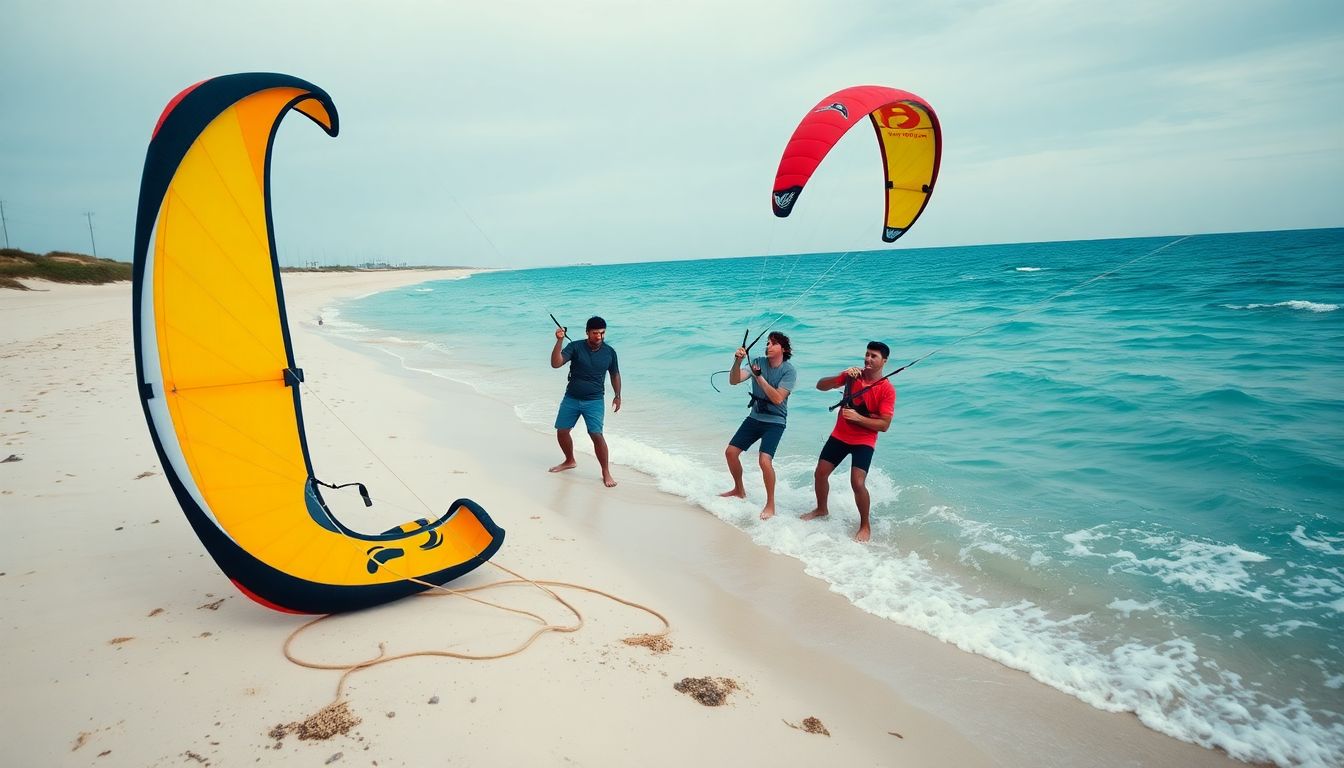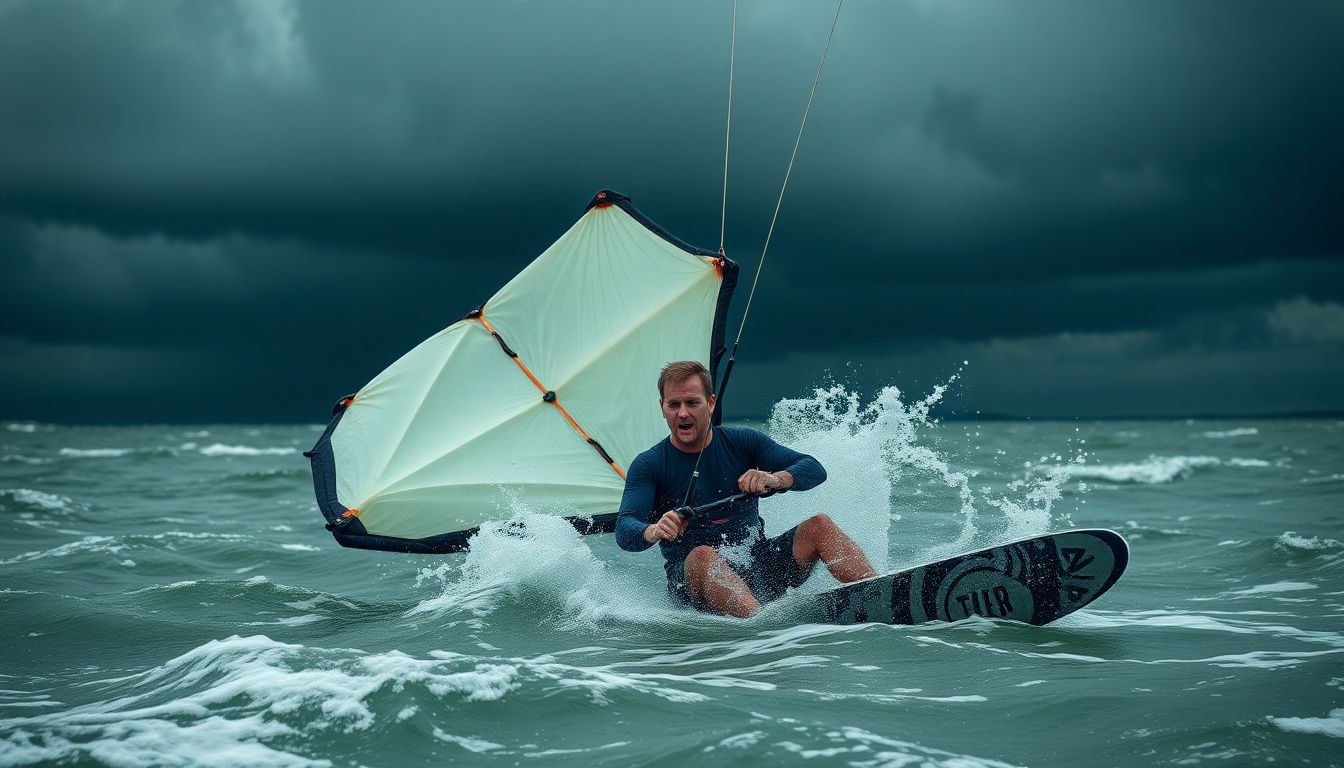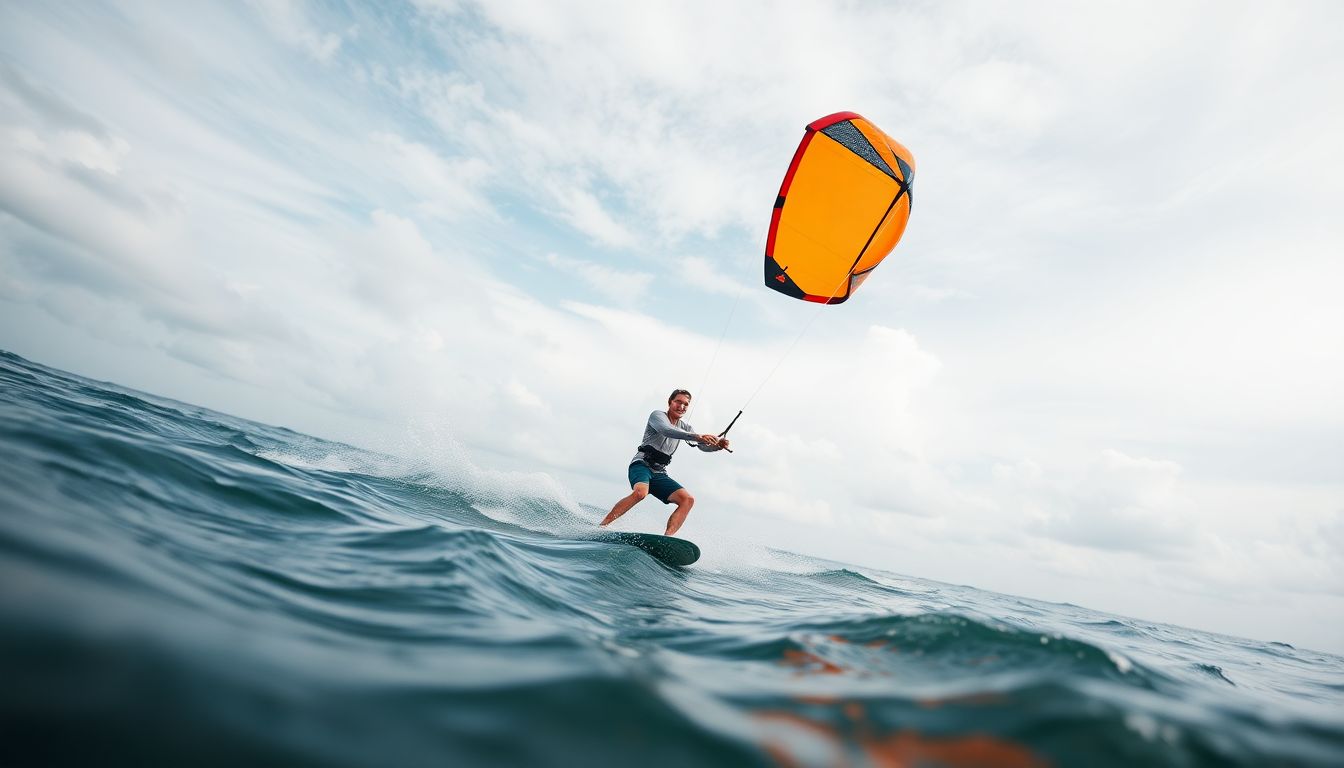The thrill of kitesurfing draws many to the water, but it also comes with its own set of challenges. As exciting as it is, new kitesurfers face a steep learning curve. It’s vital to recognize common kitesurfing mistakes and learn how to sidestep them for a safer, more enjoyable experience. This article outlines five frequent errors beginners make and offers actionable ways to prevent them.
[Also see out article A Beginner’s Guide to Choosing the Right Kitesurfing Gear].
Mistake #1: Improper Kite Control in Light Wind Conditions
Kitesurfing in light winds can be tricky. Many newcomers struggle to keep their kite steady, leading to frustration and potential accidents.
- Difficulty Maintaining Kite Position: In gentle breezes, your kite can become unstable easily.
- Techniques for Effective Kite Control:
- Adjust your body position to keep steady.
- Use subtle steering inputs rather than aggressive movements.
- Kite Loops and Depower: Learning to use your kite’s loop and depower system can boost performance even in low wind.
Mistake #2: Neglecting Essential Safety Procedures
Safety can’t be overlooked. Without proper precautions, the power of the kite can lead to accidents.
- Underestimating Kite Power: Beginners often underestimate how strong kites can pull.
- Wind and Equipment Checks: Always study the wind conditions and inspect your kite and lines before launching.
- Emergency Procedures: Familiarize yourself with self-rescue techniques. Knowing how to react in an emergency can save your life.
Mistake #3: Incorrect Body Positioning and Stance
Your body position matters more than you think. Poor alignment can lead to a lack of power and balance.
- Body Alignment: Incorrect stance can result in ineffective power transfer, causing you to lose control.
- Stable Stance Tips:
- Keep your knees slightly bent.
- Center your weight over the board.
- Core Strength and Flexibility: Engage in exercises that boost your core strength and flexibility. This will help greatly in maintaining balance.

Mistake #4: Ignoring the Importance of Proper Kite Launch and Landing Procedures
Launching and landing your kite safely is crucial. Many mishaps occur during these phases, sometimes leading to injuries.
- Statistics on Mishaps: A significant percentage of injuries happen when launching or landing.
- Safe Launch and Landing Steps:
- Always check wind direction before launching.
- Alert others around you of your intentions.
- Practice with a buddy whenever possible.
- Emergency Situations: Be prepared for unexpected issues, such as losing control of the kite. Have a plan ready for these moments.
Mistake #5: Insufficient Training and Inadequate Gear
Going solo without proper training can lead to bad habits and accidents.
- Risks of Self-Teaching: Trying to learn on your own often results in poor technique and safety mishaps.
- Choosing the Right Equipment: The size of your kite and board is important. Ask a professional for advice on what suits you best.
- Invest in Quality Gear: Quality equipment and ongoing lessons can enhance your kitesurfing experience and safety.
Conclusion
Avoiding these five common mistakes can significantly improve your kitesurfing journey. Remember, patience and practice are key. Embrace the challenges, and don’t hesitate to seek professional guidance. Your growth in this exhilarating sport relies on continuous learning and commitment. Start mastering the waves and enjoy every moment out there! For more see here.








